Climate Control
26 April 2024
Please join us on Friday, April 26th, from 6-8 PM for Alonso Leon-Velarde’s solo exhibition, Spiritual Inflammation. The pieces in the show are created through reflection, much of them made or finished in San Francisco. Continuing a years-long practice, the exhibition blends Latin American orthodoxy with Western New Age consciousness seeking alternative forms. Flickers of light off the Pacific Ocean, painting in the sand.
__
What lies under
Alonso’s paintings are visions. They come out of a form of faith. He listens to the great perennial catechisms of América, but answer them he does not. Cross and bells are but shape and sounds. When I first met Alonso, he was speaking about eating men.(1) He had a taste for real flesh not bread. By consuming the first Adam and his children, he gains oracular sight not of HEAVEN AND HELL(2) but life as it is now and the multiplicity of visions that stem from it.
The regurgitation of flesh is essential to his work. It is the transference of energy from the source to the senses, and each digestion outputs a vision of life continually renewed. Repetition is an act of preparation preluding the vision. Witness, for example, the series of like-paintings of angels. For though angels stand upon the mantle, eat it and it grows organs and limbs, breathes new buds and branches, and becomes a cactus. Each regurgitation is the regeneration of a new species.(3) This is what happens when Alonso diets on the flesh of man. Swallow man and make manifold.
There is an old Gnostic symbol of a serpent eating its tail like a perpetual wheel. Spirit and matter contained in One, devoured and remade forever anew. By swallowing itself, the serpent spins its own great Equality. So, Alonso feasts upon the serpent’s skin. He eats it in the recognition of a world made of matter and spirit, and that in matter lies the spirit, and of the spirit, there lies the matter. Digested, they turn out a vision of both. Are not the Nazca lines equal to the sign of the Cross drawn upon this torso of América? Is there not the great Mystery of the Seed found in each?(4)
It is interesting how, in two places, Mexico City and Cusco, there are two edifices that stand on one older one. Above the uncovered Templo Mayor and Coricancha stand the vision of the Cross. Beneath the Peruvian desert emanates a quenchless and unexposed vision. They do not stand as contrasts but are rather like visions.
Quod est inferius, est sicut quod est superius.
Et quod est superius, est sicut quod est inferius.(5)
That which is below is like that which is above
and that which is above is like that which is below.(6)
Mark ultimately where his vision lies. Alonso has feelings peculiar and kin to mystics. It is the shared recognition that the world is more than what it lets on, but his visions are heightless. He visited Assisi several years ago but cannot accept its walls. His paintings emerge from an open participation with the world. This is his rite and ritual. They are accumulative, and their reverberations are endless.
EL
_____________
(1) Andrade, Oswald de, “Cannibalist Manifesto,” Latin American Literary Review 19, no. 38 (Jul.-Dec. 1991)
(2) Huxley, Aldous, Heaven and Hell (London: Chatto & Windus, 1956).
(3) Species derives from the Latin, specere, “to look”.
(4) Cruz, Juana Inés de la, “Loa para el auto sacramental de “El divino narciso”, in Obra Selecta (Caracas: Biblioteca
Ayacucho, 1994).
(5) “Tabula smaragdina” in De Alchemia (1541).
(6) Newton, Isaac, “Tabula Smaragdina”, Keynes Ms. 28, King’s College, Cambridge, UK.
__
Alonso Leon-Velarde (b. 1993, Lima, PE) is an artist based between Lima and Mexico City. Primarily working in painting, his work combines elements of personal history, science fiction, and contemporary subjects. The artist considers the ways western media travels and permeates South American visual cultures, examining traces of orthodoxy embedded in the landscape. Additionally working in sound, Leon-Velarde’s compositions often incorporate improvisation and a group of constant collaborators. Leon-Velarde has been included in exhibitions at El Instante Fundación, Madrid; Museo de Arte Moderno, Mexico City; Whitechapel gallery, London; Drawing a Blank (DRABL) at 14 Wharf Road, London; O’Flaherty’s, New York and Ginsberg Galería, Lima.
Downloadable PDF of the exhibition

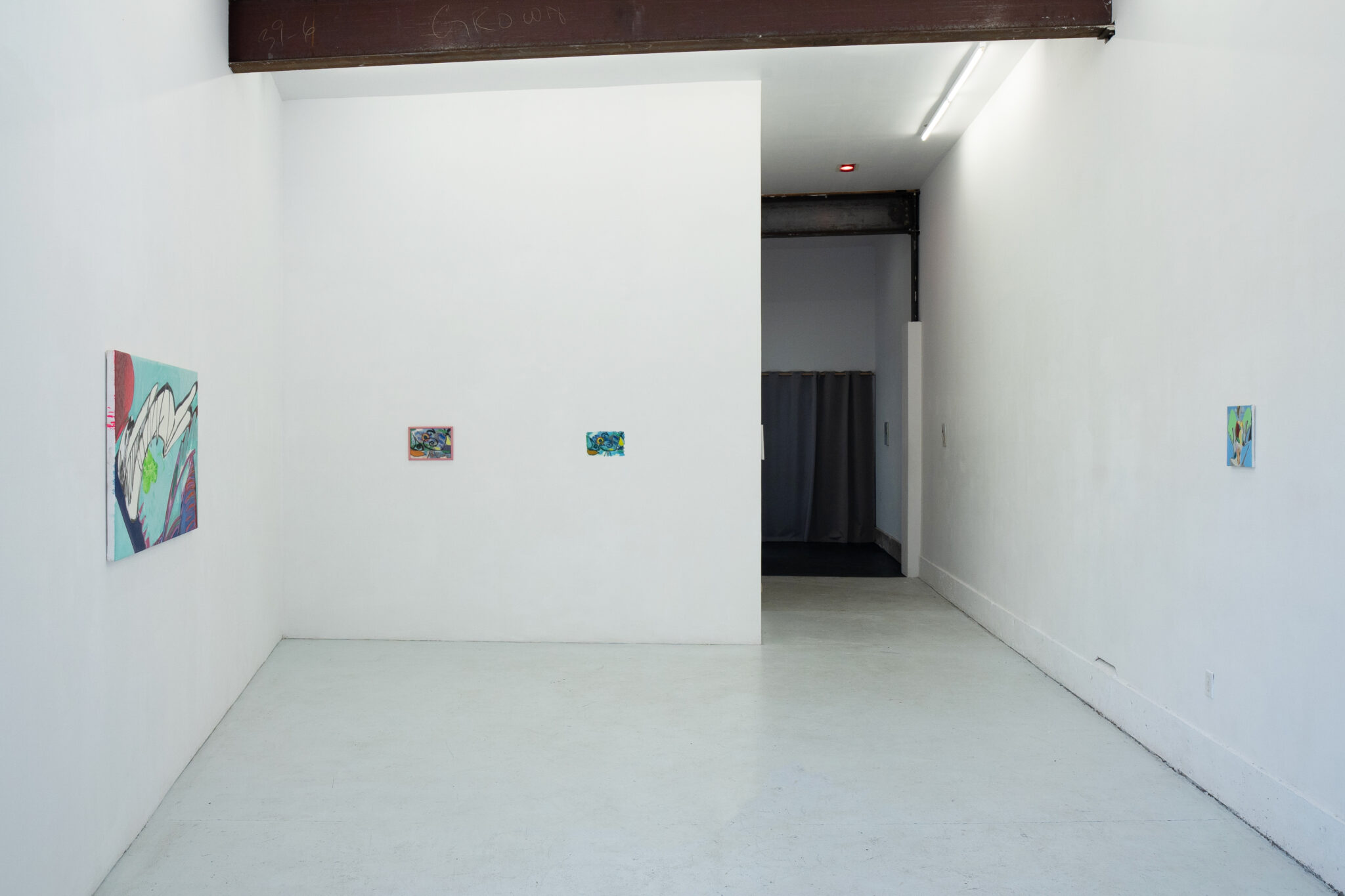

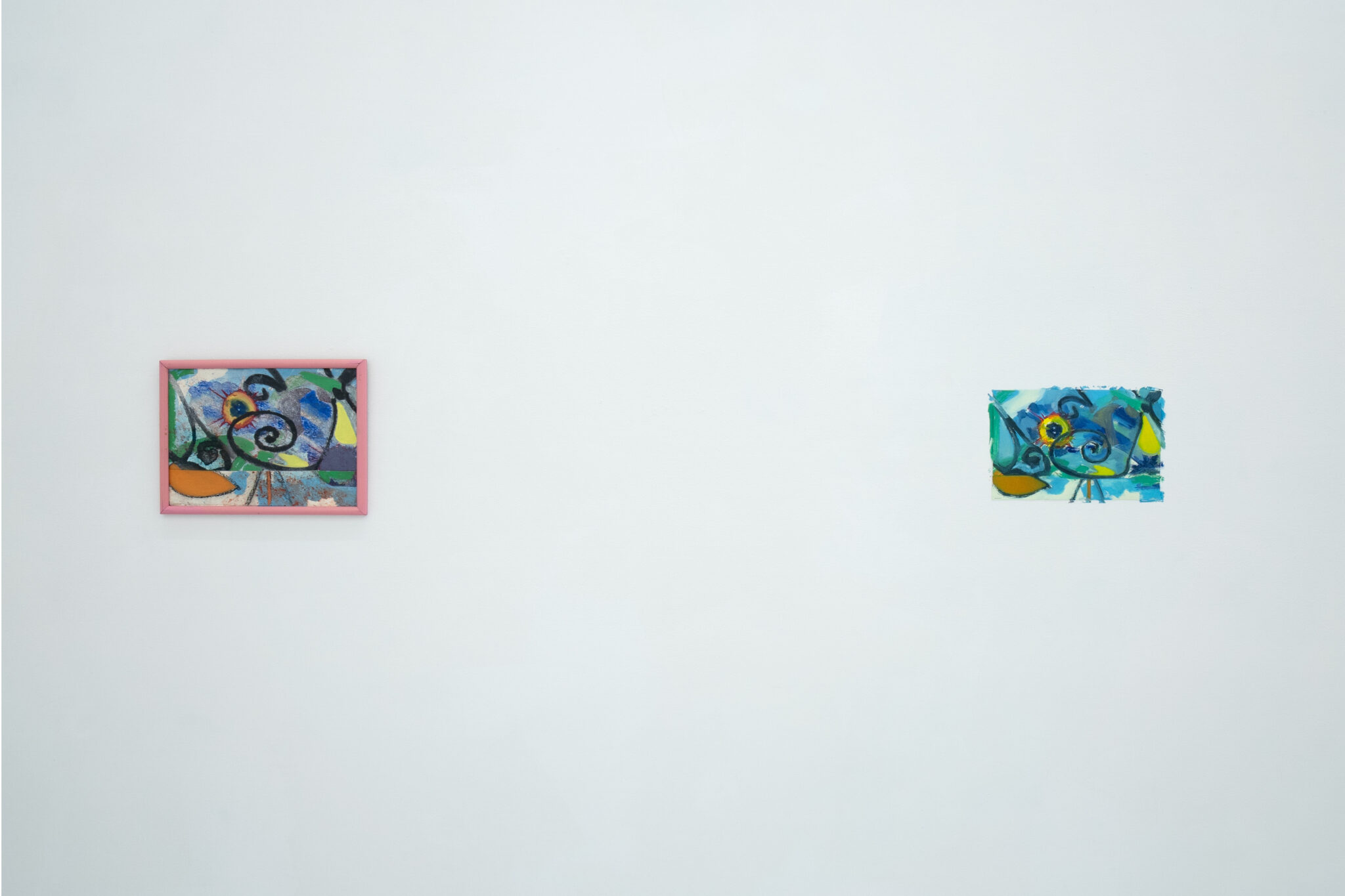


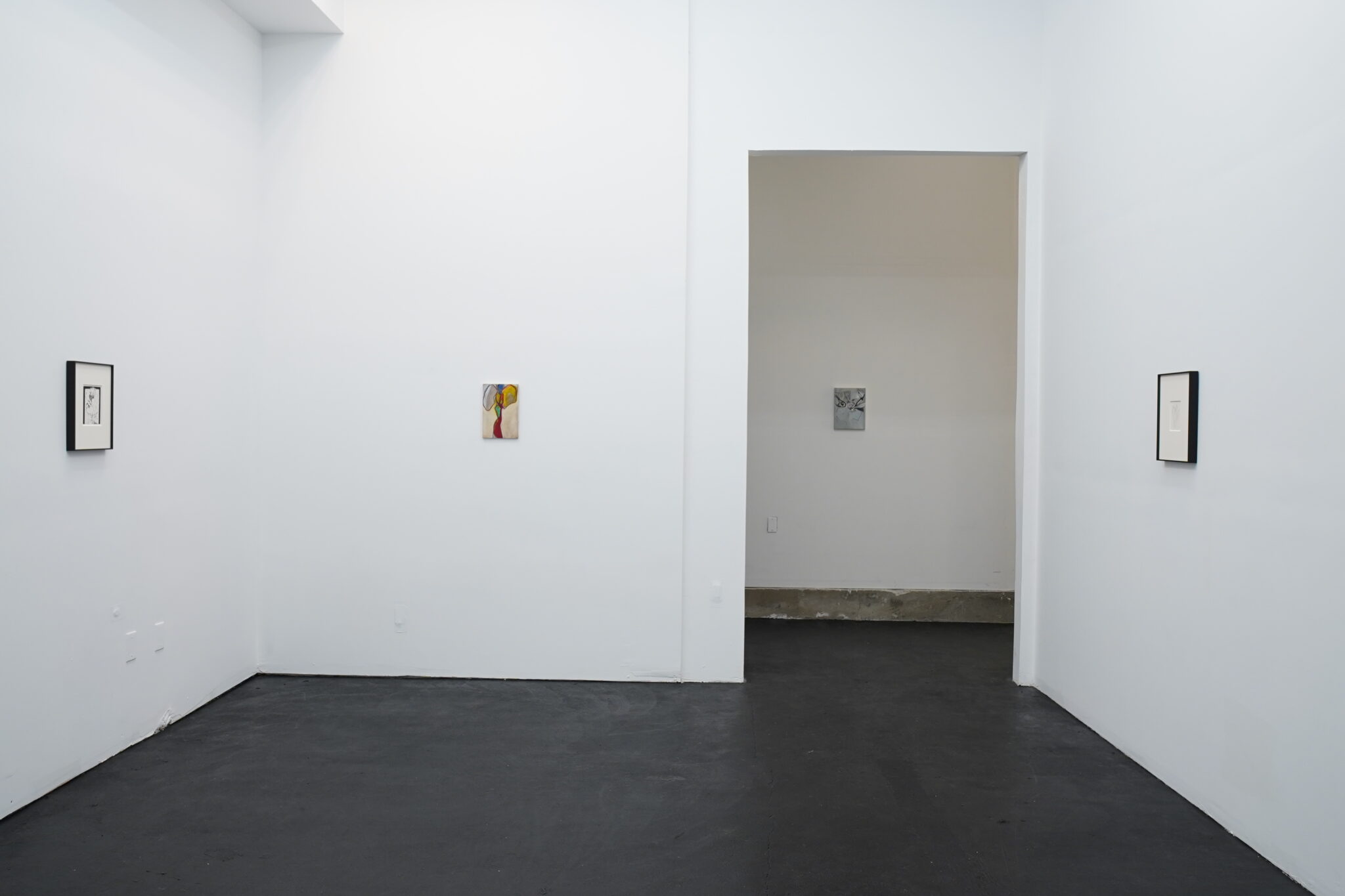
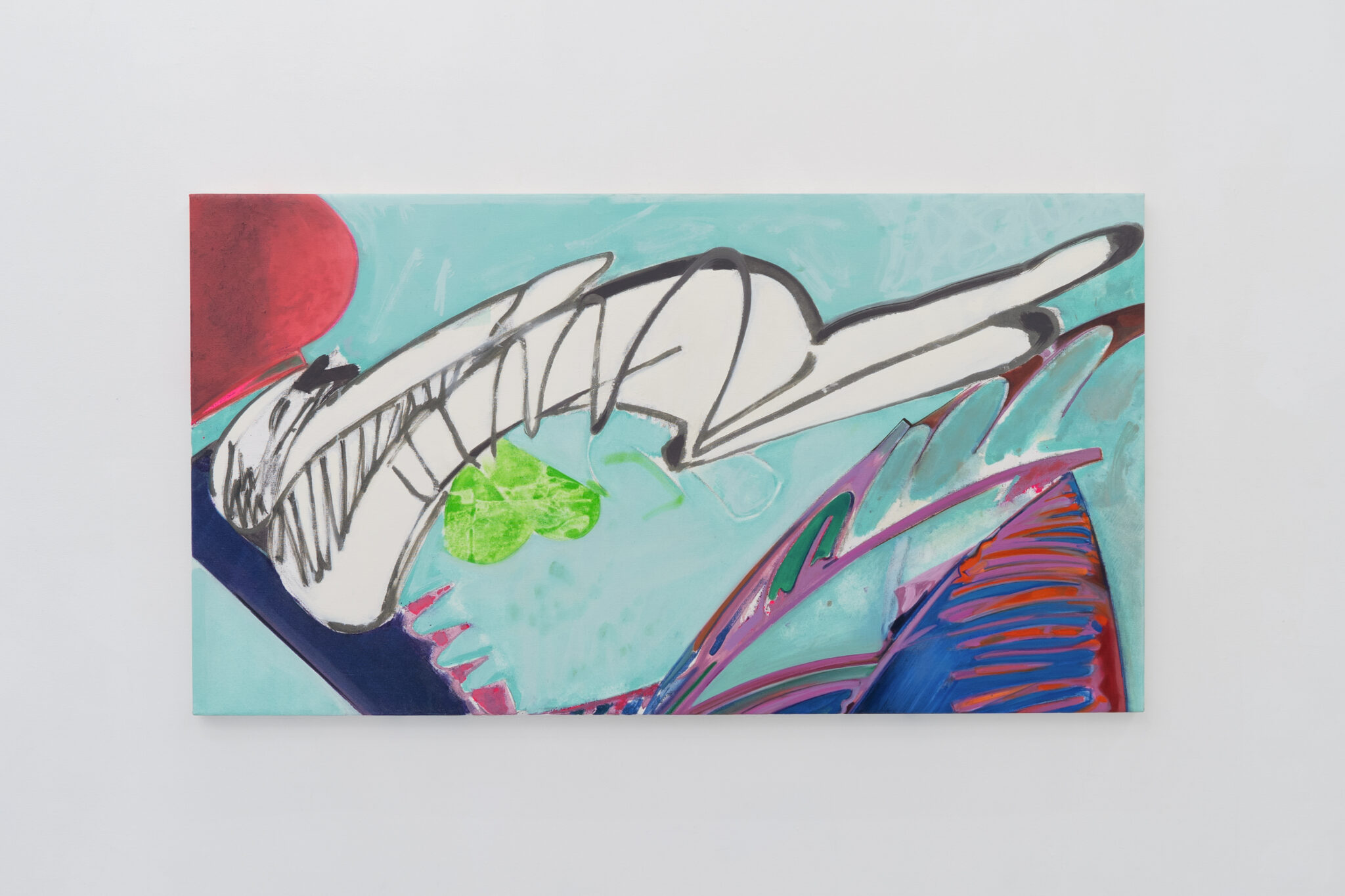 Connected (poor connection), 2022
Connected (poor connection), 2022
Oil on canvas
56 x 30 inches
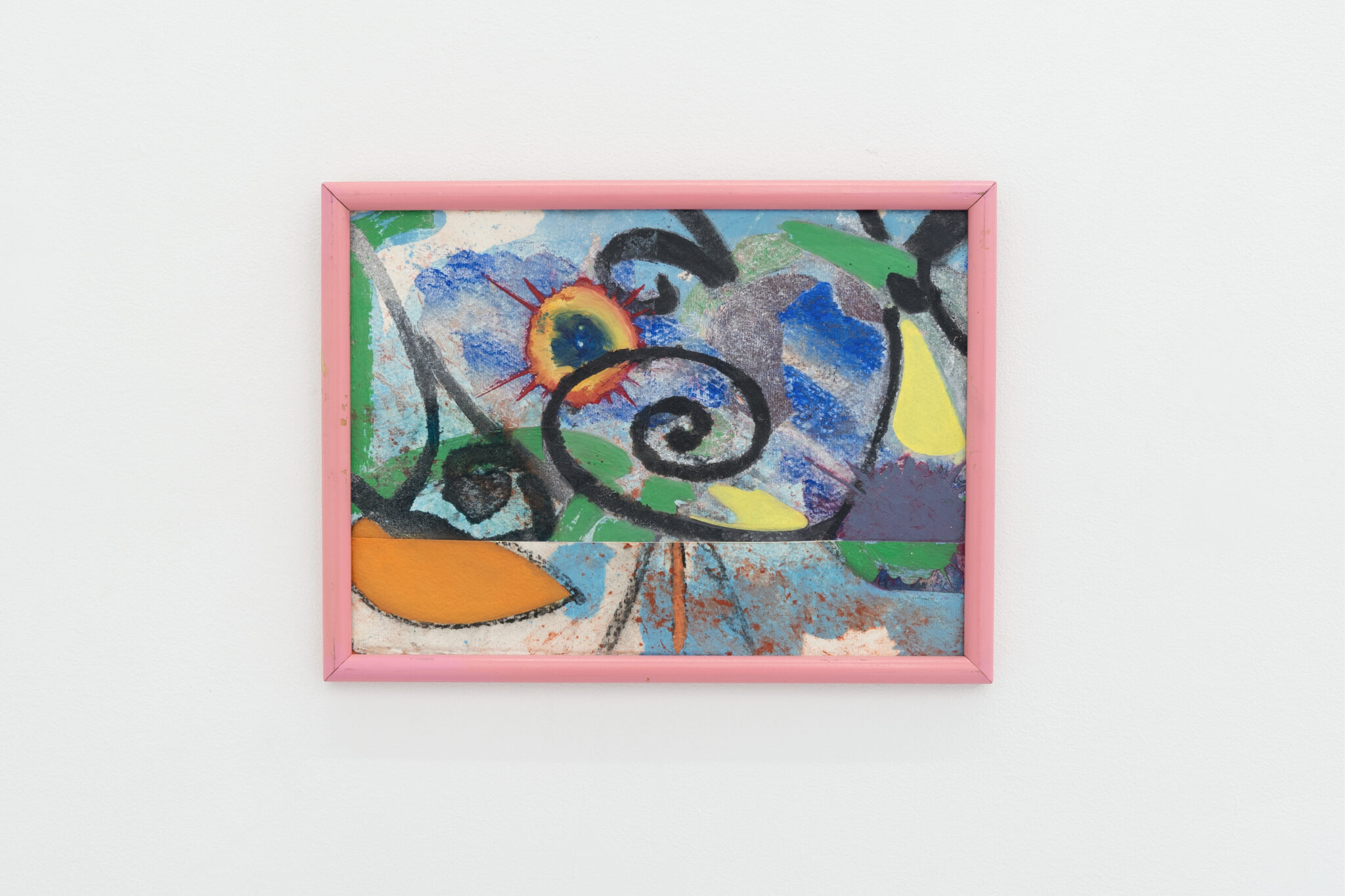 The beginning and the end, 2023
The beginning and the end, 2023
Oil and collage on paper
10 x 14 inches
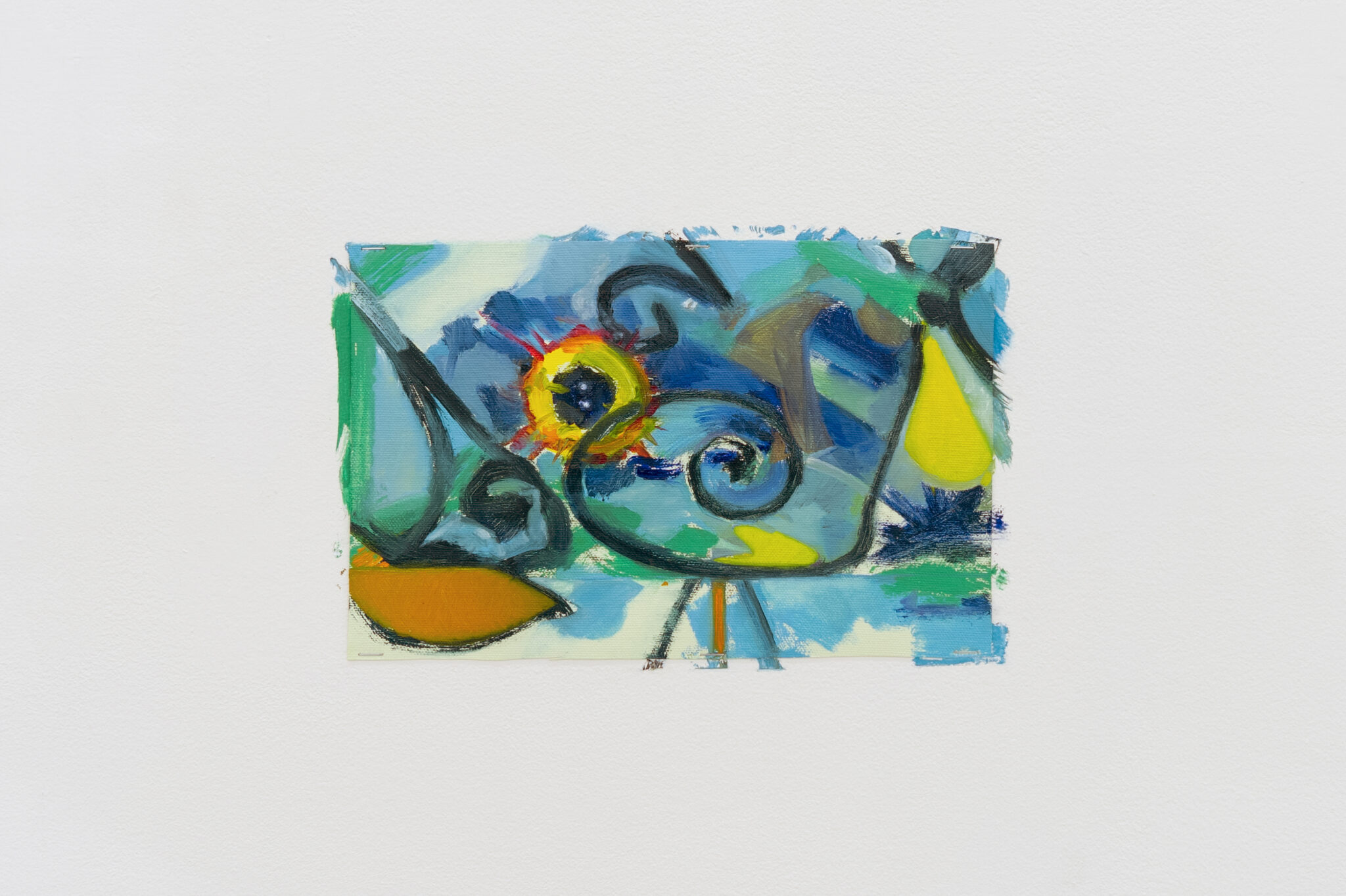 The beginning and the end, as well, 2024
The beginning and the end, as well, 2024
Oil on canvas
7 x 11 inches
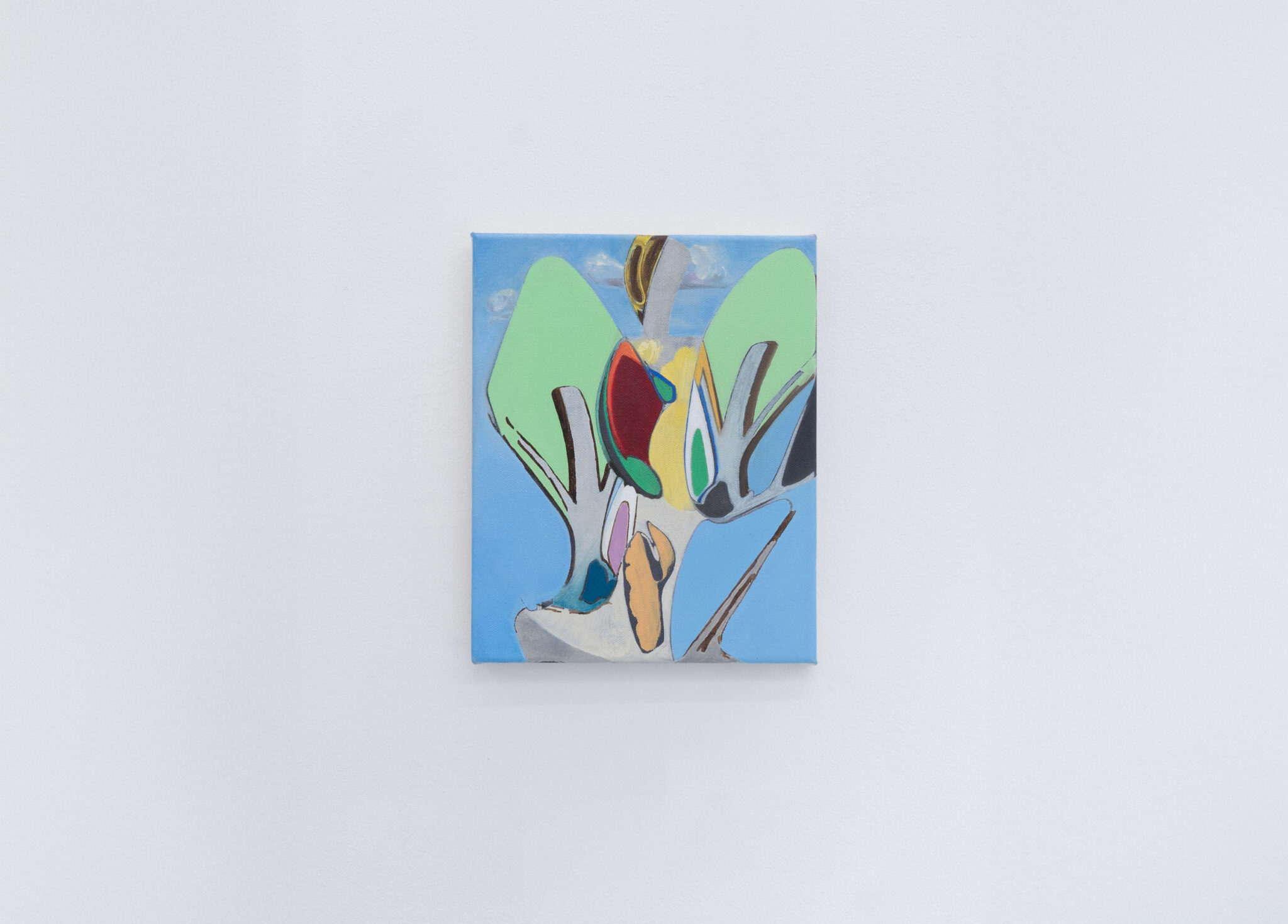 Destello, 2024
Destello, 2024
Oil on canvas
10 x 8 inches
 Entrada o pasaje, 2024
Entrada o pasaje, 2024
Oil on linen on board
8.5 x 6 inches
 Bends, 2024
Bends, 2024
Oil on canvas
12 x 9 inches
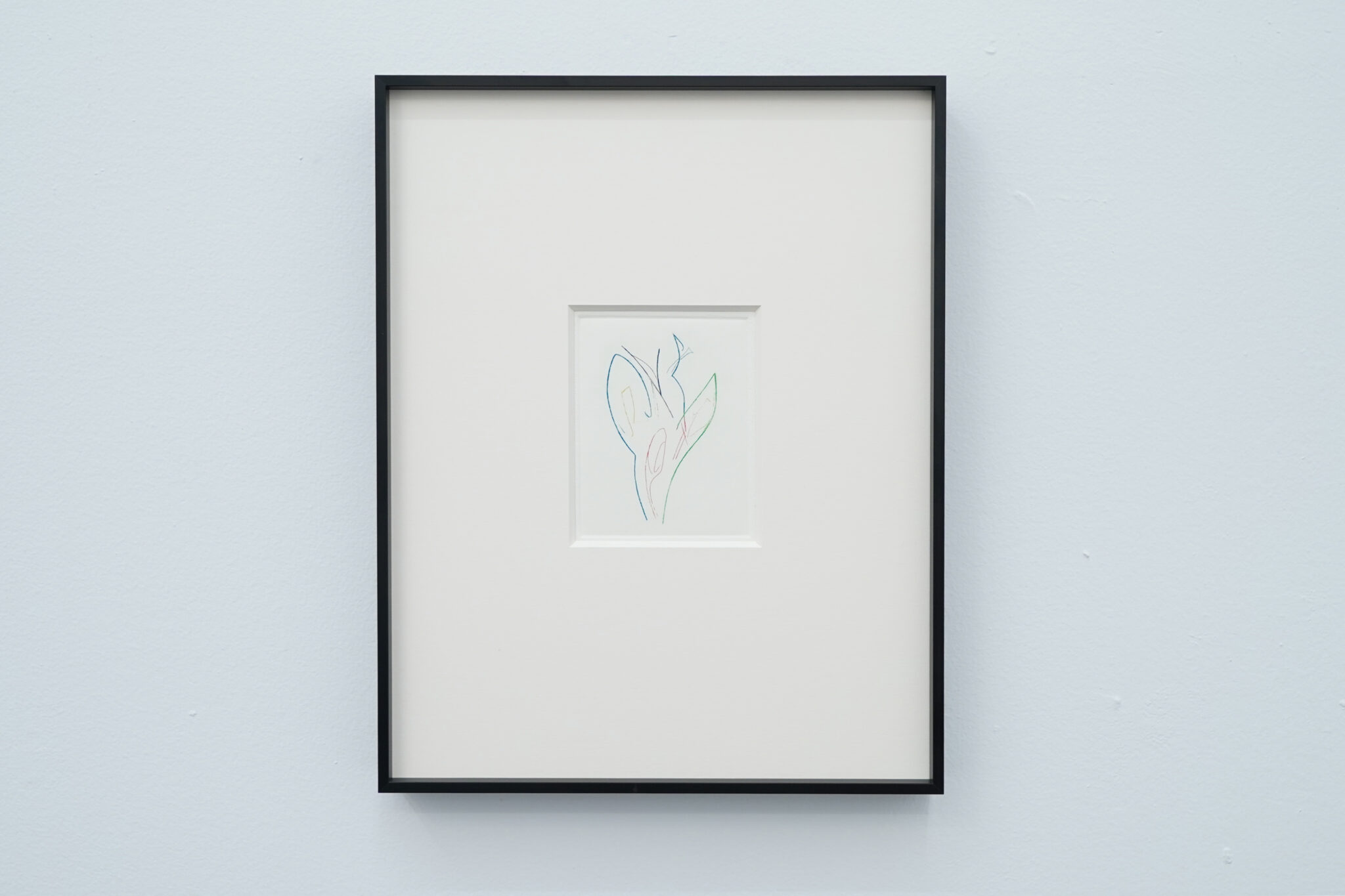 Spiritual Inflammation #1, 2024
Spiritual Inflammation #1, 2024
Etching à la poupée
14 x 11 inches
Edition of 4
 Spiritual Inflammation #7, 2024
Spiritual Inflammation #7, 2024
Etching with aquatint and burring
11 x 14 inches
Edition of 4
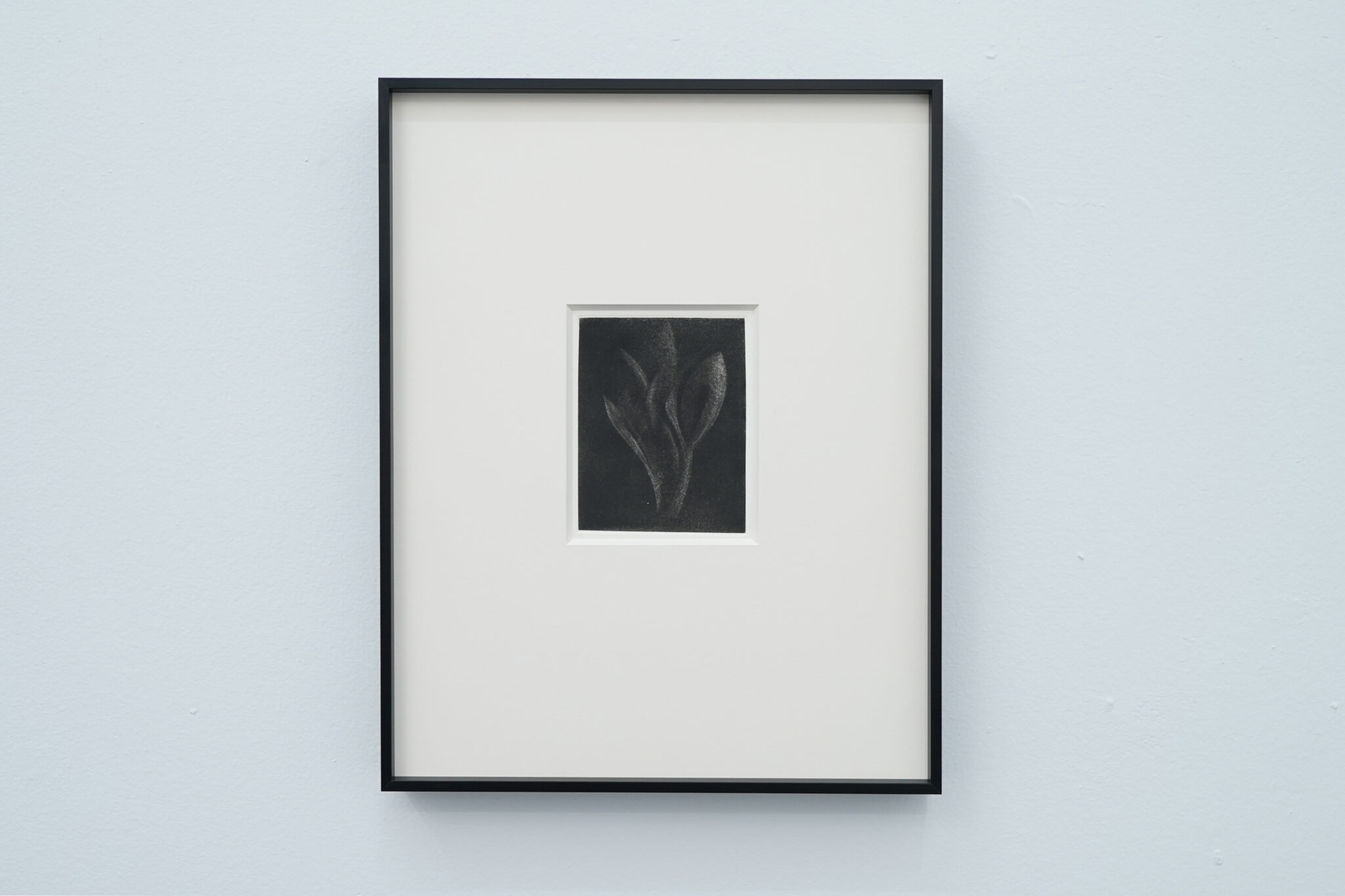 Spiritual Inflammation #2, 2024
Spiritual Inflammation #2, 2024
Mezzotint
14 x 11 inches
Edition of 4
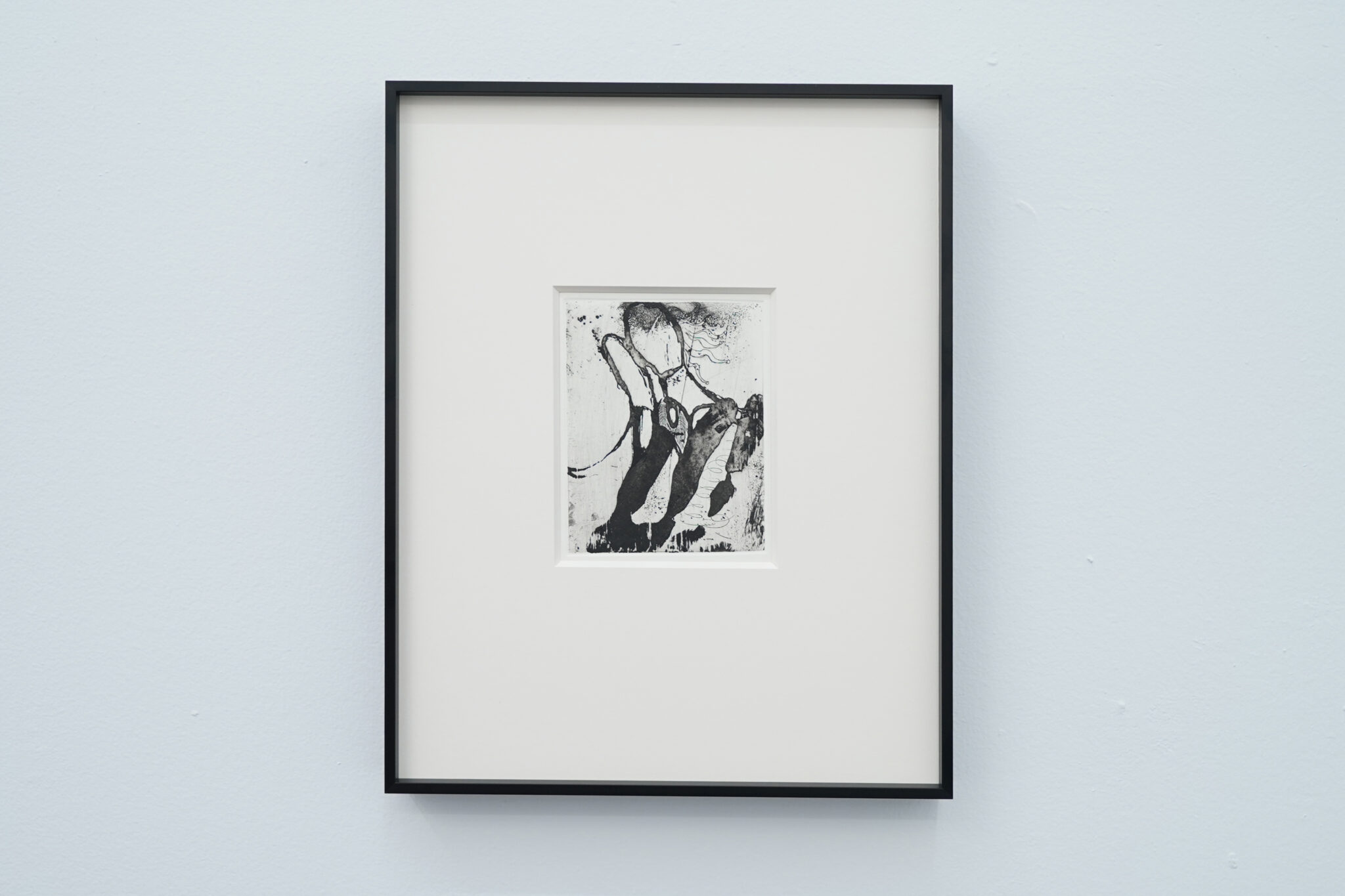 Spiritual Inflammation #3, 2024
Spiritual Inflammation #3, 2024
Etching with aquatint and burring
14 x 11 inches
Edition of 4
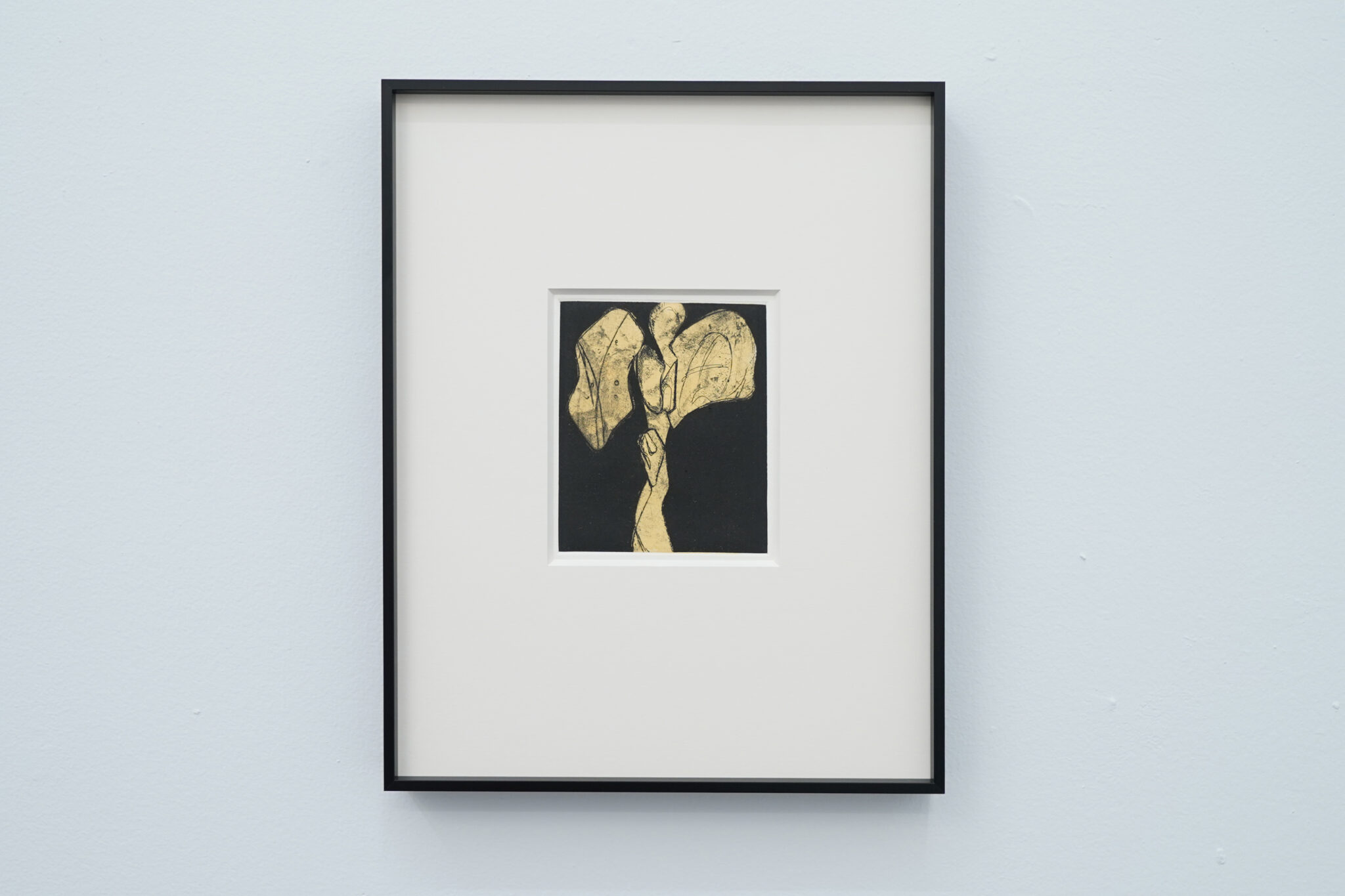 Spiritual Inflammation #4, 2024
Spiritual Inflammation #4, 2024
Etching with aquatint
14 x 11 inches
Edition of 4
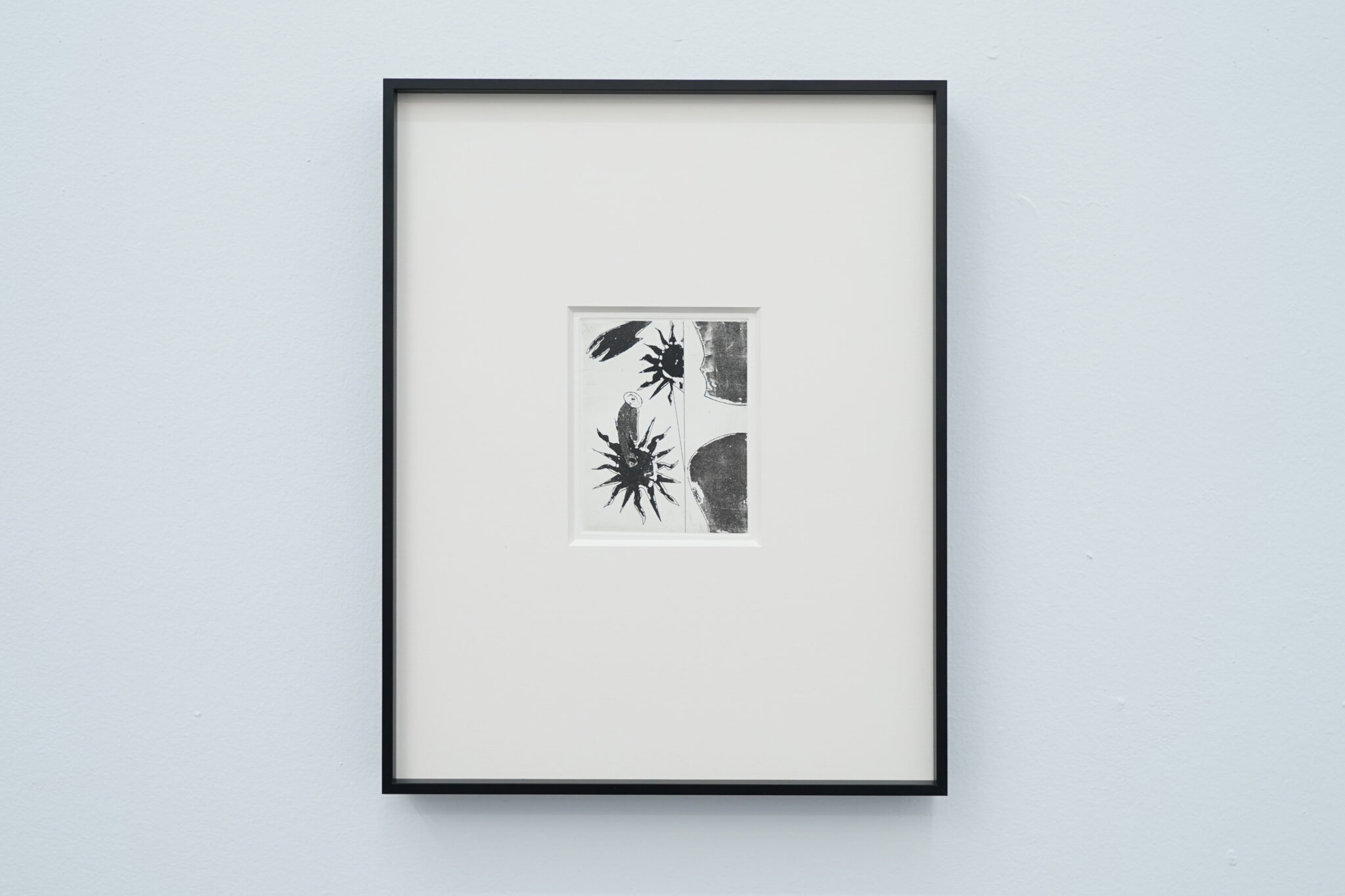 Spiritual Inflammation #6, 2024
Spiritual Inflammation #6, 2024
Etching with aquatint
11 x 14 inches
Edition of 4
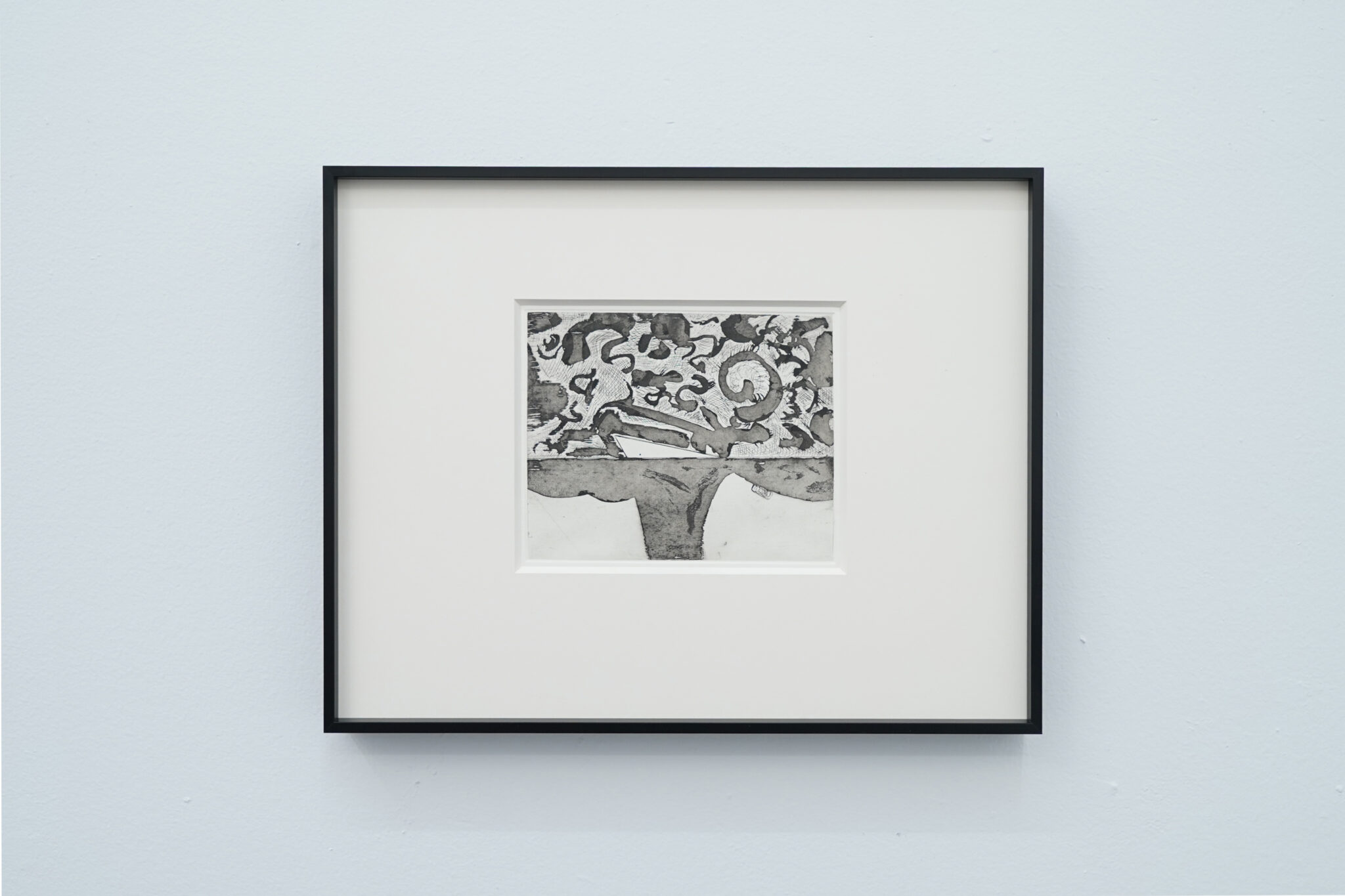 Spiritual Inflammation #8, 2024
Spiritual Inflammation #8, 2024
Etching with aquatint
14 x 11 inches
Edition of 4
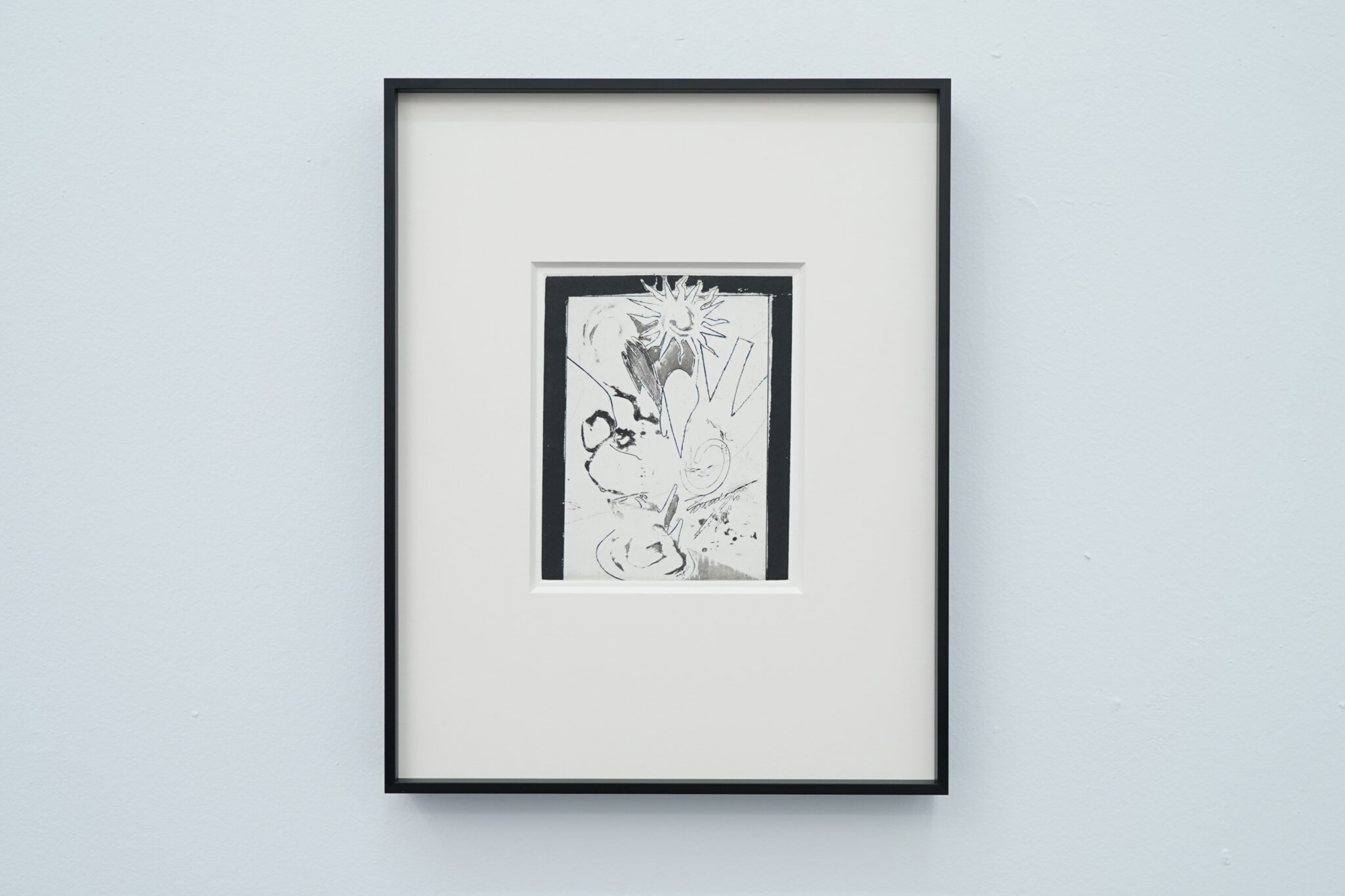 Spiritual Inflammation #5, 2024
Spiritual Inflammation #5, 2024
Etching with aquatint and burring
14 x 11 inches
Edition of 4
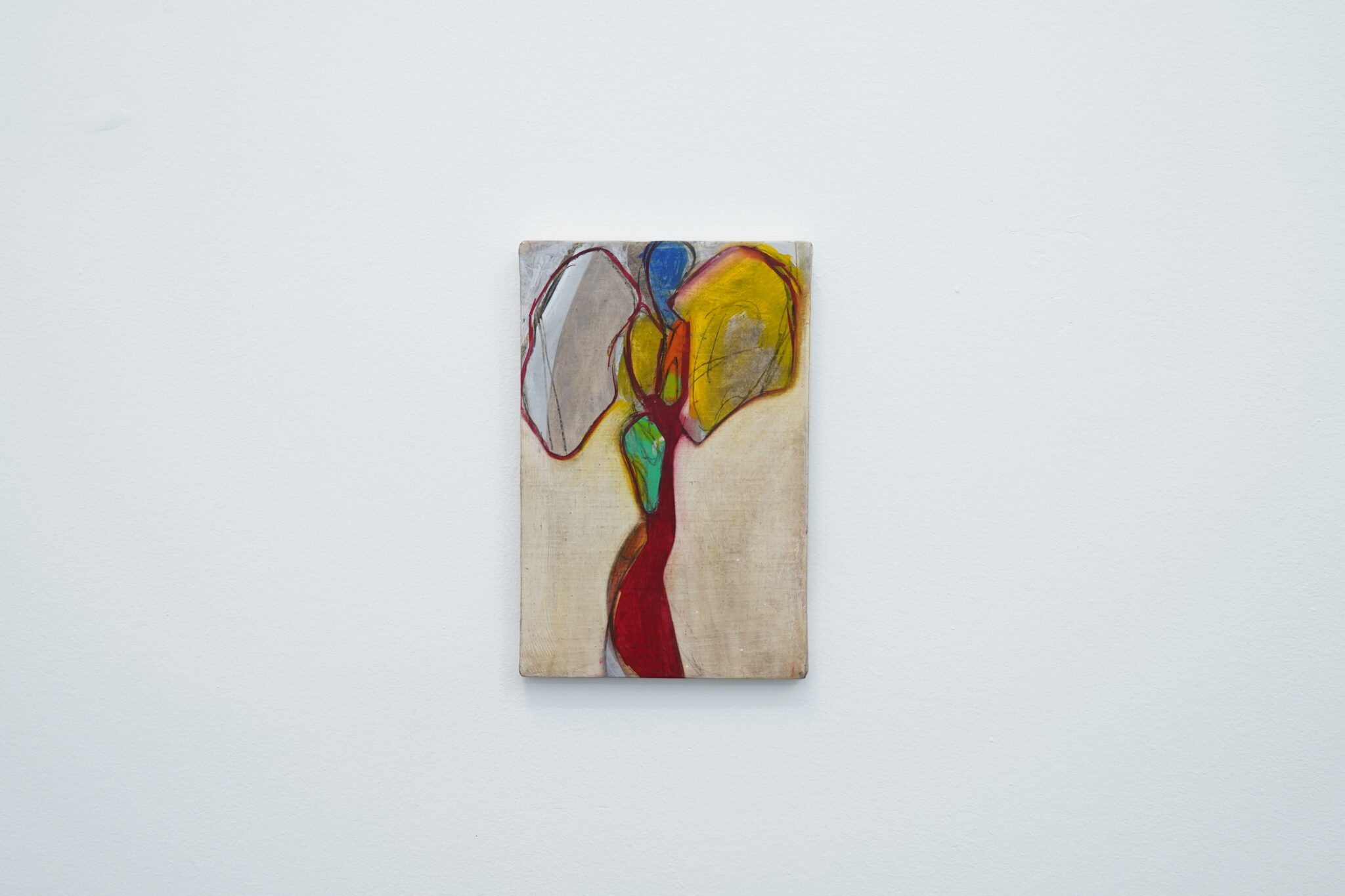 Cantos de cuna, 2023
Cantos de cuna, 2023
Oil on canvas
12 x 8 inches

Magic and reason cross each other in Latin America – the two inform the present, they expand. Time travel becomes a figure of everyday life, a line that reverberates to other lines, stitching together the surfaces of how we come to know who and where we are. This is sketched across Alonso Leon-Velarde’s notebook while we sit at Nico’s kitchen table picking up the threads of a conversation on Theology from a phone call months prior. A shape like an angel is repeated, once weathered, once organic, once graphic and so on.
Jacques Lacan was a French psychoanalyst who proposed the idea of “quilting points” to indicate moments along a signifying chain, a chain of history and meaning-making, in which the signifier (that which initiates meaning) is attached to the signified (what is meant). For a moment, even if brief, meaning is inseparable from the past. A 17th-century drawing of Emperor Pachacuti, worshiping Inti at Koricancha, appears as if through magic in the suns of modernist Italian painting. Those suns re-appear in etchings, here, translated through ink and through a form refined in a small painting made a year prior. A pattern on the ground in Marin made by sticks pulled together from a hiker long-gone, repeats a shadow from the curves and structural supports of a balcony, captured in a sketch from a previous age in Mexico.
For Alonso the painting is never in isolation. A suspicious looking piece of beachwood becomes an amulet– a spirit-object covered in canvas. It is split in two, ground and sky, past and present, the spine of a book cover-to-cover. Space travels, as does Alonso. He shows me a folder that has accompanied him to San Francisco, small compositions squirreled away, perhaps like the shape between my ear and the doorway I sit next to. It is like he is always walking backwards, he tells me, on a beach, collecting things as he moves. A practice is a term for how we make work. Alonso’s practice is a meandering script, materials are a lifetime, a score for passing through what is sensed and what is known, an attunement to the frequency of the world’s enchanted pathways, its synchronicities and its power struggles.
Emily

